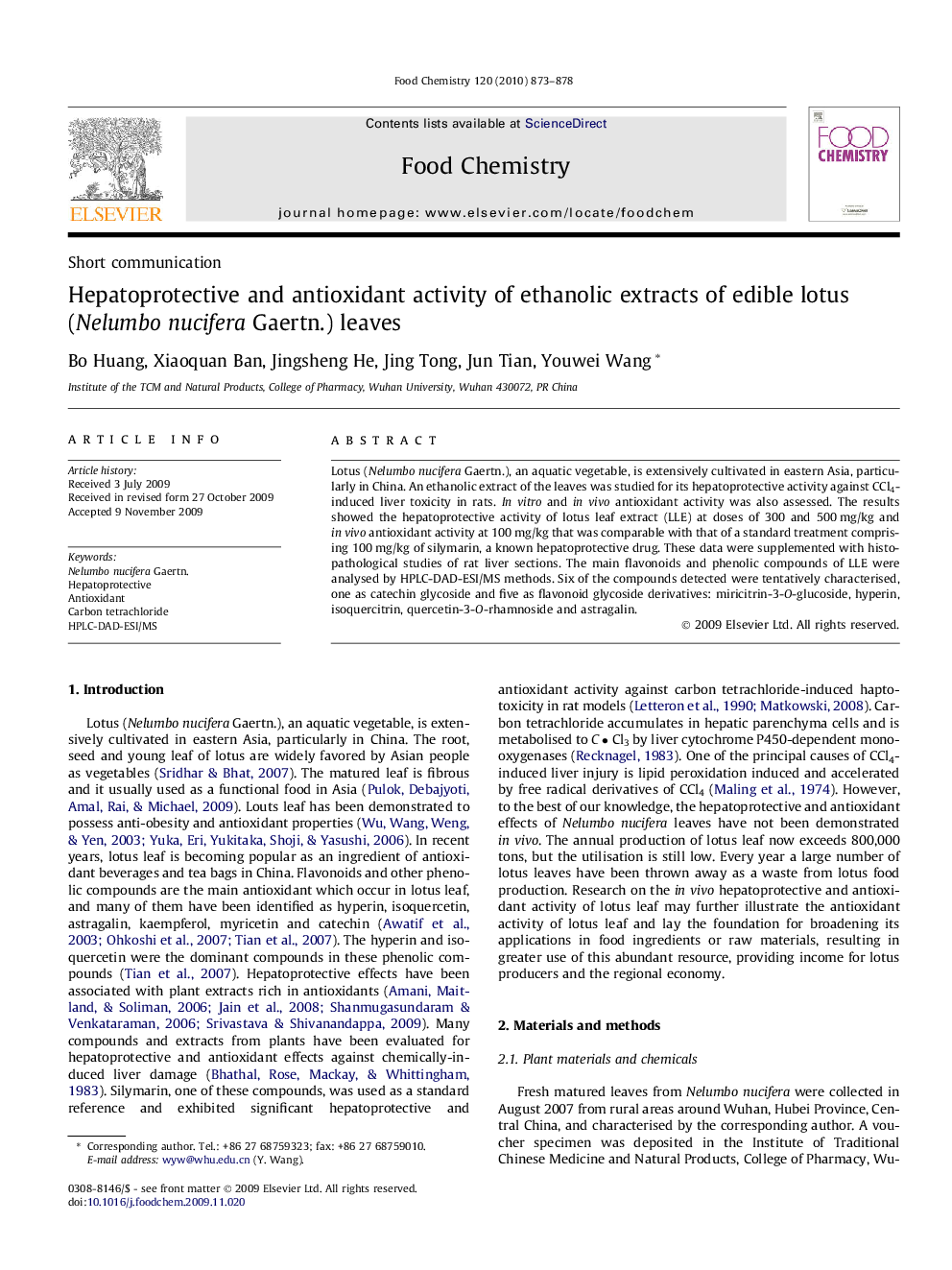| Article ID | Journal | Published Year | Pages | File Type |
|---|---|---|---|---|
| 1190681 | Food Chemistry | 2010 | 6 Pages |
Lotus (Nelumbo nucifera Gaertn.), an aquatic vegetable, is extensively cultivated in eastern Asia, particularly in China. An ethanolic extract of the leaves was studied for its hepatoprotective activity against CCl4-induced liver toxicity in rats. In vitro and in vivo antioxidant activity was also assessed. The results showed the hepatoprotective activity of lotus leaf extract (LLE) at doses of 300 and 500 mg/kg and in vivo antioxidant activity at 100 mg/kg that was comparable with that of a standard treatment comprising 100 mg/kg of silymarin, a known hepatoprotective drug. These data were supplemented with histopathological studies of rat liver sections. The main flavonoids and phenolic compounds of LLE were analysed by HPLC-DAD-ESI/MS methods. Six of the compounds detected were tentatively characterised, one as catechin glycoside and five as flavonoid glycoside derivatives: miricitrin-3-O-glucoside, hyperin, isoquercitrin, quercetin-3-O-rhamnoside and astragalin.
